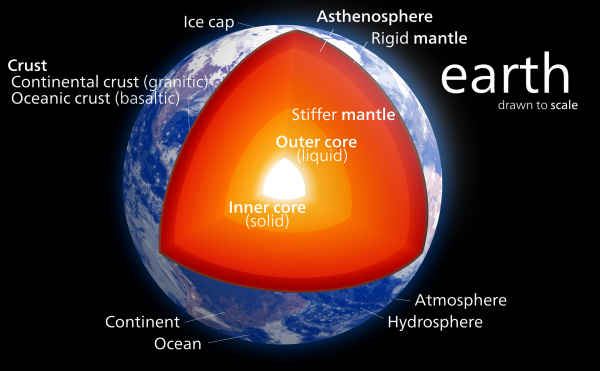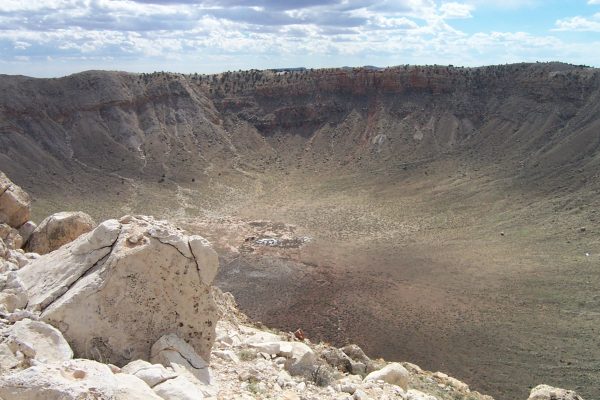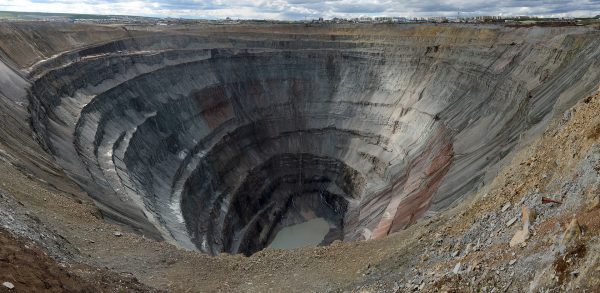Superdeep Diamonds Confirm Ancient Reservoir Deep Under Earth’s Surface

Most diamonds are formed between 90 – 150 miles below the earth’s surface. Some diamonds, however, are called “deep” or “super deep” diamonds.
Scientists and researchers have been debating just what the Earth is made of for centuries now. From the time of Galileo, men have wondered not only what lurks out in the stars but also down here, deep in the earth’s core.
Just because we’ve been preoccupied with other matters, like getting man to the moon, doesn’t mean the scientific community isn’t still baffled about what the Earth’s deep recesses are made of, and recently an old theory has been brought to the fore once again.
Scientists recently postulated to the online publication, Science Alert, that diamonds are giving them new clues.
These precious stones have been tossed up, so to speak, to the Earth’s surface by the furious roiling of active volcanoes. The stones are lending new weight to the theory that within the earth’s core is a massive reservoir of “primordial magma,” as researchers have dubbed it.

This material, they suspect, has rested untouched and unseen, for more than four billion years. Suzette Timmerman of the Australian National University explains that, as the hardest substance we know, diamonds create a “time capsule” that gives a view into the earth where they originated.
Timmerman has been studying 24 diamonds found in one of the hottest of hotspots on earth for diamonds, the Juina region of Brazil.
Although most earth science experts agree it is solid, some geologists believe the mantle holds a kind of “primordial soup,” as it is described.
This notion first came to prominence in the 1980s, and is gaining credence again in some quarters. This latest research, led by Timmerman is giving many geologists, and earth science experts in general, reason to pause and reconsider their position on just what exists deep within the Earth’s core.

His research is providing new information as to the location and depth of these primordial magma reserves. The “super deep diamonds” are formed in the transition zone, which is between 250 – 400 miles (410 and 600 kilometers) below the earth’s surface. That deep mantle, they believe, is as old as some planets, including the moon.
Since the formation of the earth, according to Eurekalert, violent shifts in the crust and impacts from meteorites caused changes in the fabric of the planet’s crust.
Deep below, however, the mantle should be untouched and can provide information as to how the earth was formed and of what materials. The lava that flowed billions of years ago was not fundamentally different from the lava that flows from volcanic eruptions today.
Lava, scientists discovered, contains an unusual ratio of helium 3 to helium 4 isotopes that is quite similar to ancient meteorites found on earth. The diamonds, formed so deep, contain the same material and help reveal new insights into the Earth’s interior.
Matthew Jackson, of the University of California, Santa Barbara, who did not help with the study, was impressed by Timmerman’s findings and believes that it will lead to more research to determine if the ancient helium in the diamonds actually reflects the composition of the mantle where they are formed rather than the host lava that brought the diamonds to the surface.

Another Article From Us: Precious Archeological Ala-Tey Site Located at The Bottom of The So-Called Sayan Sea
In other words, scientists and geologists don’t have all the answers yet, but these diamonds have given them vital insights into the Earth’s evolution as a planet. It will no doubt take many more years of intensive research for experts to be able to draw further conclusions, and offer us more knowledge about the place we all call home.
